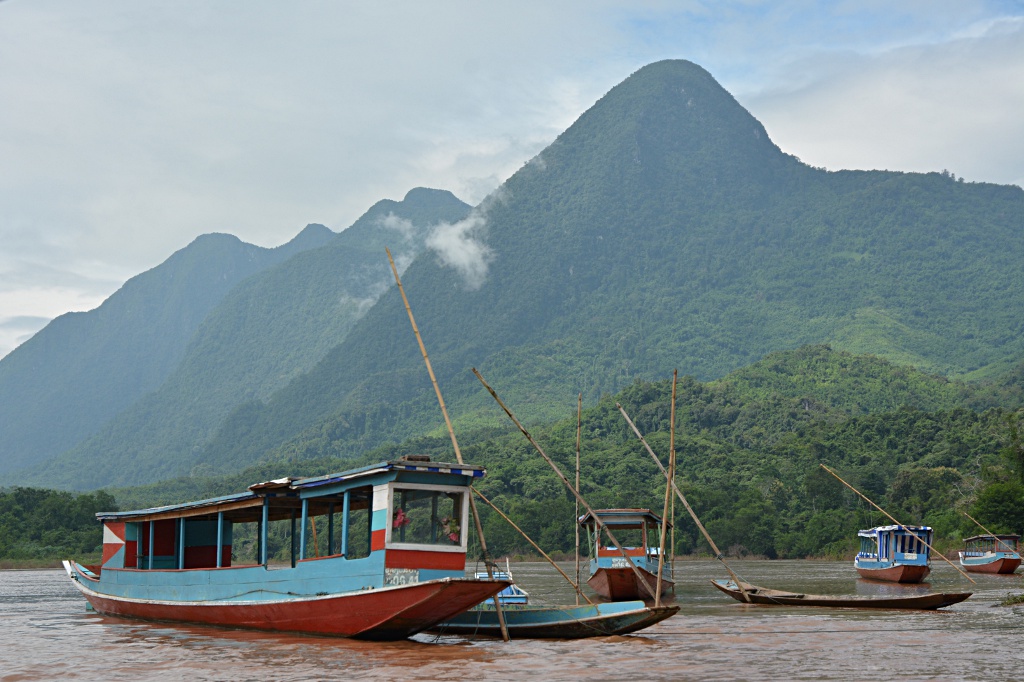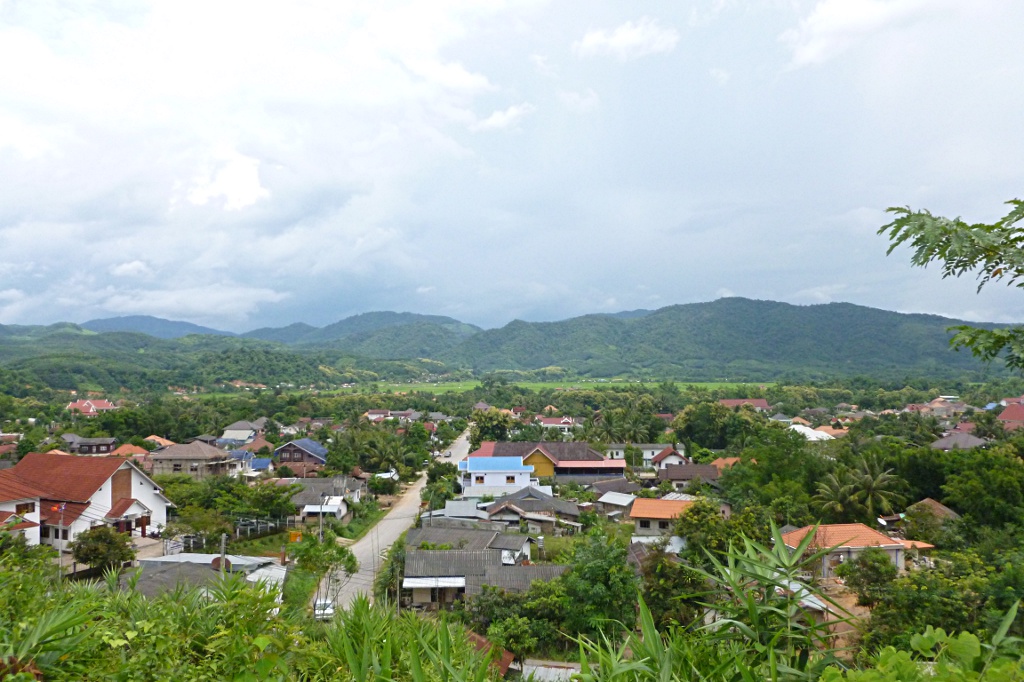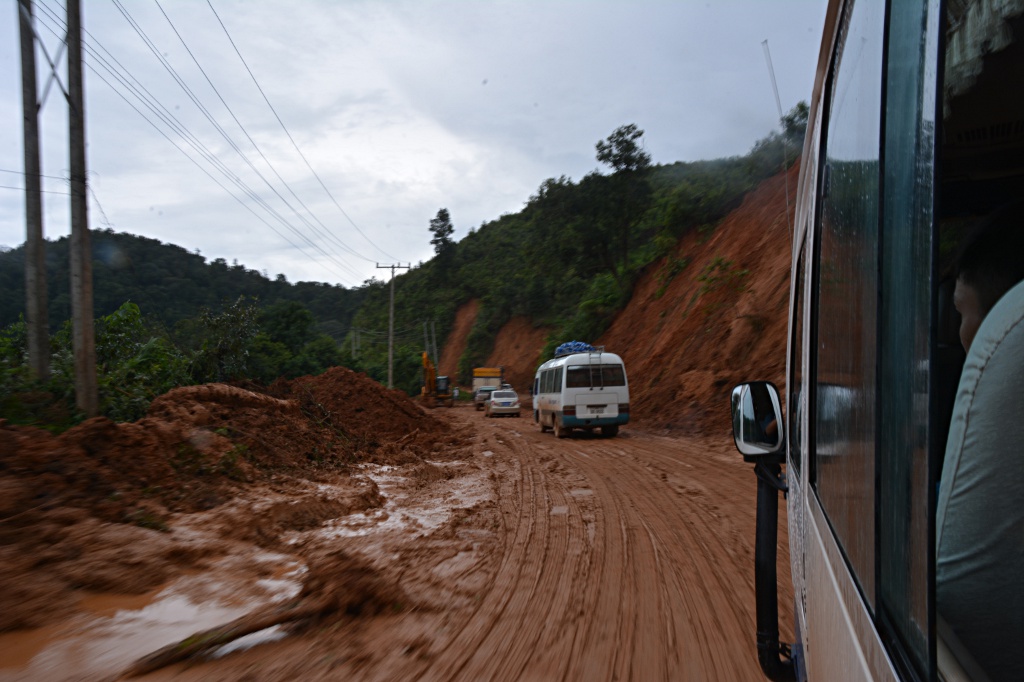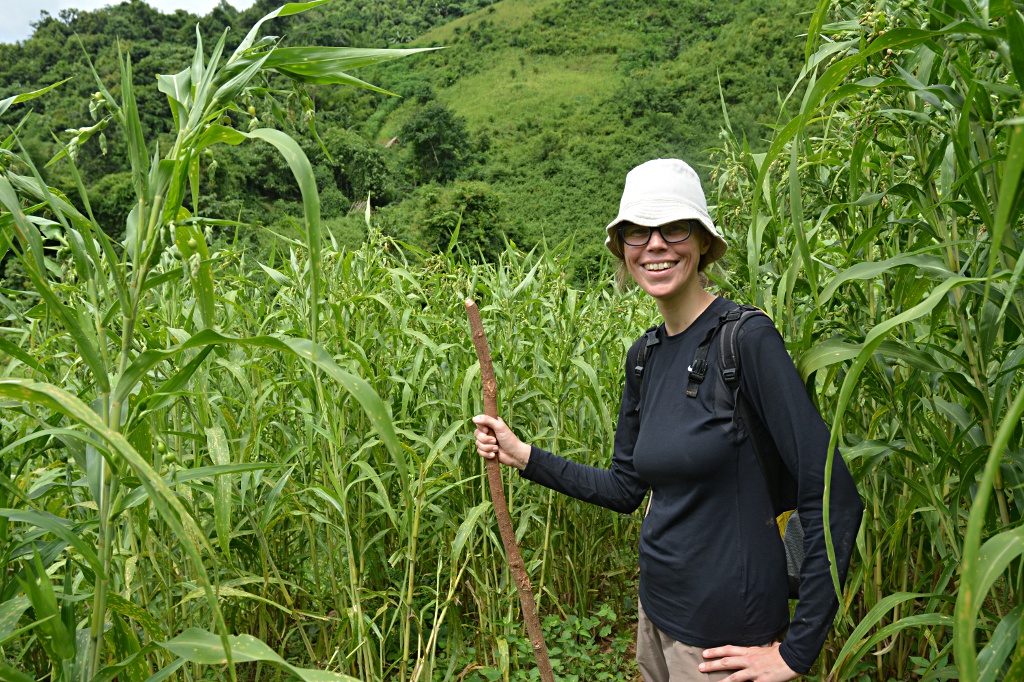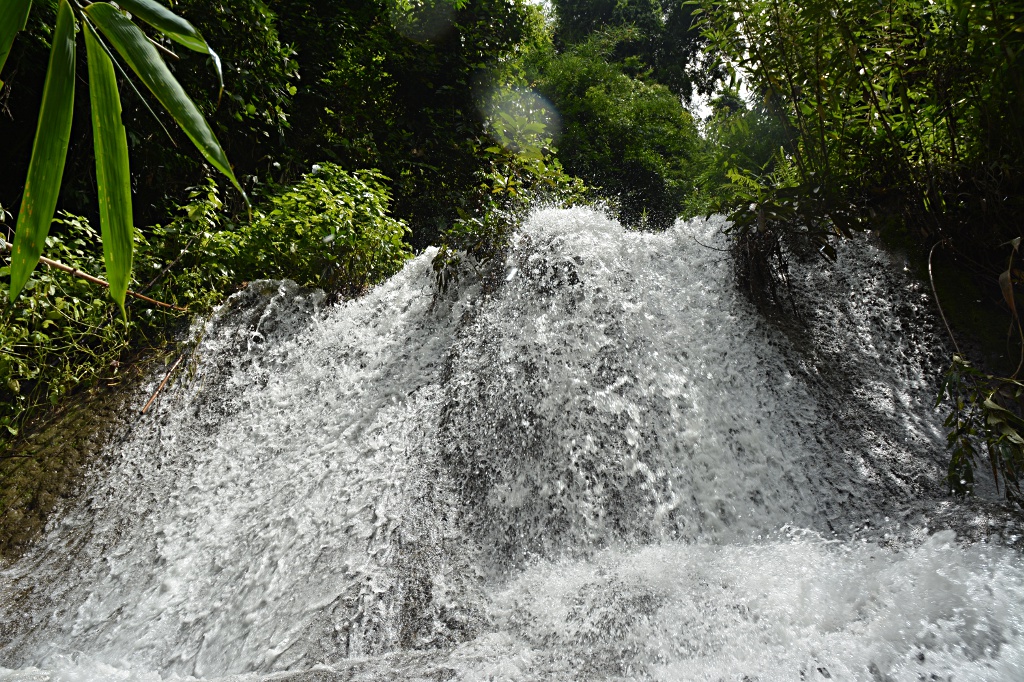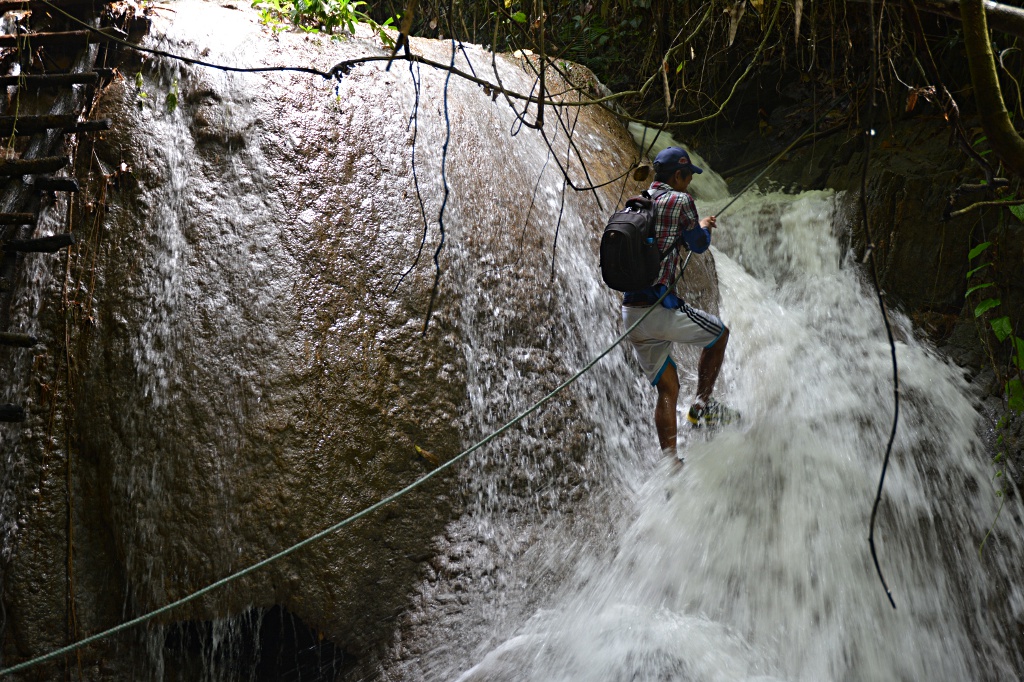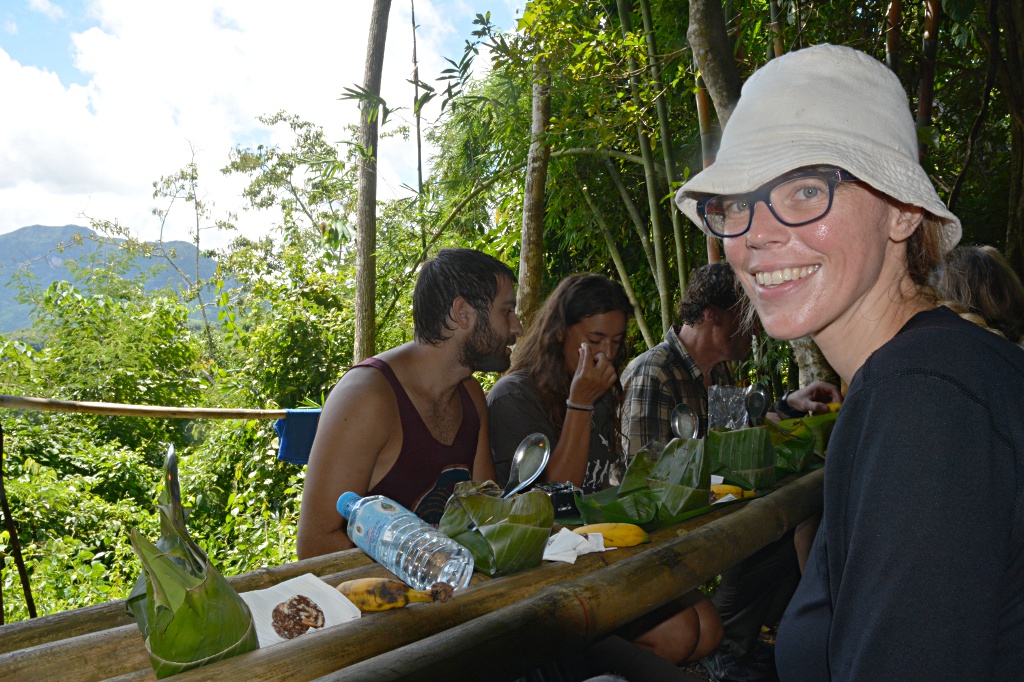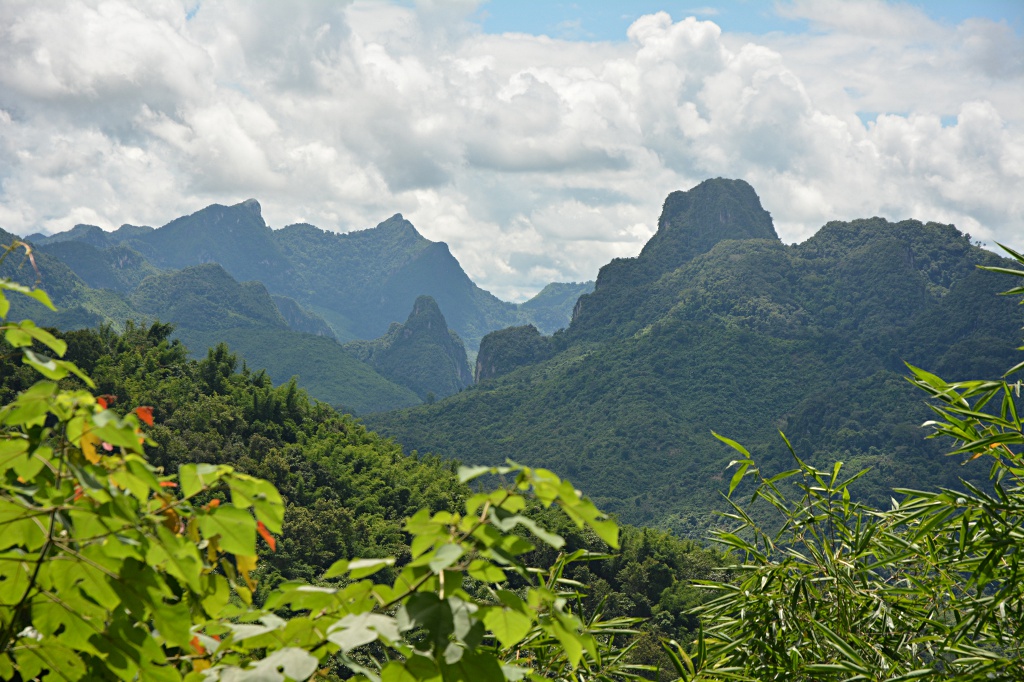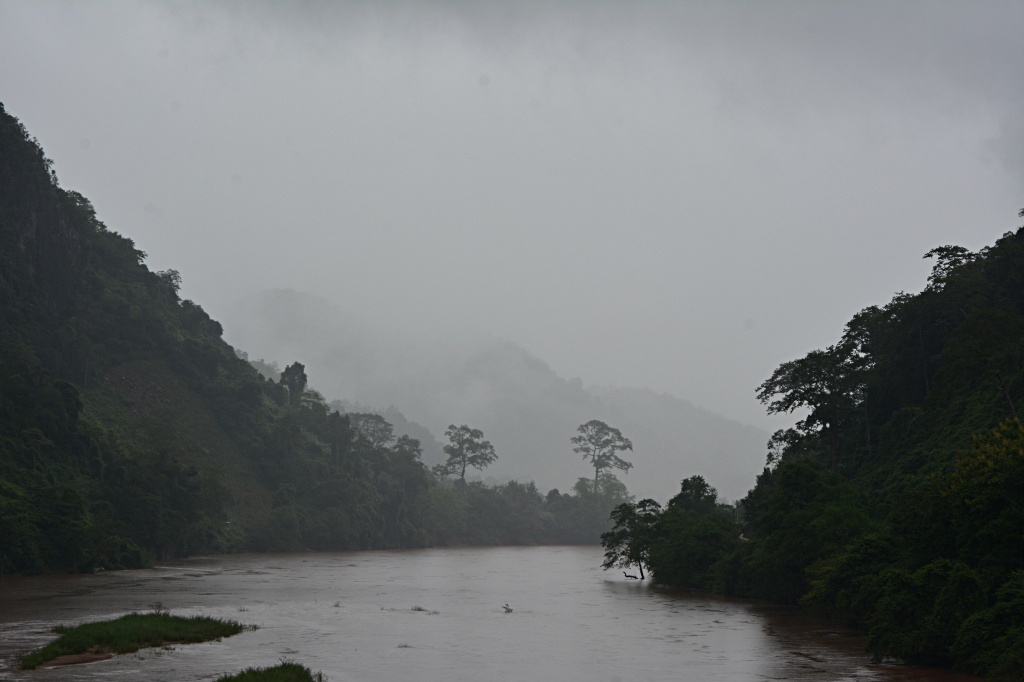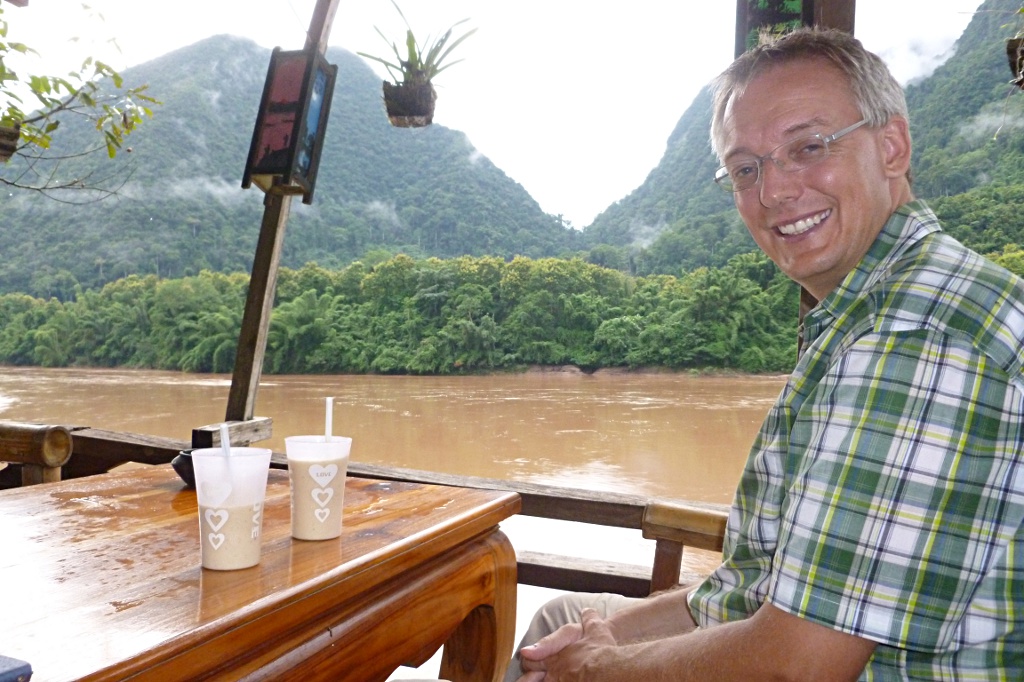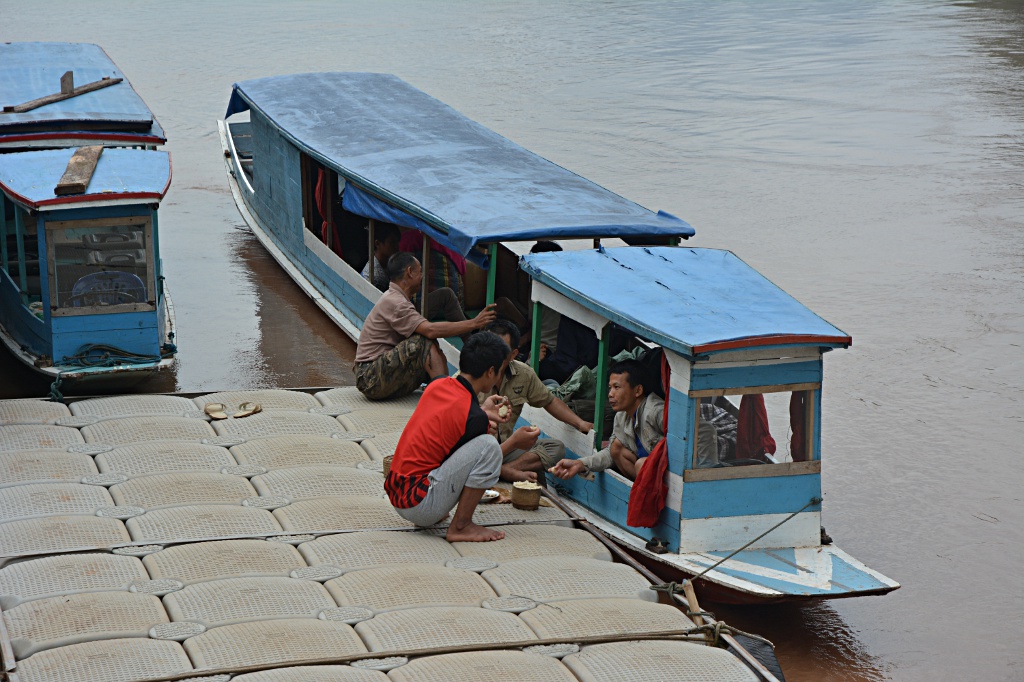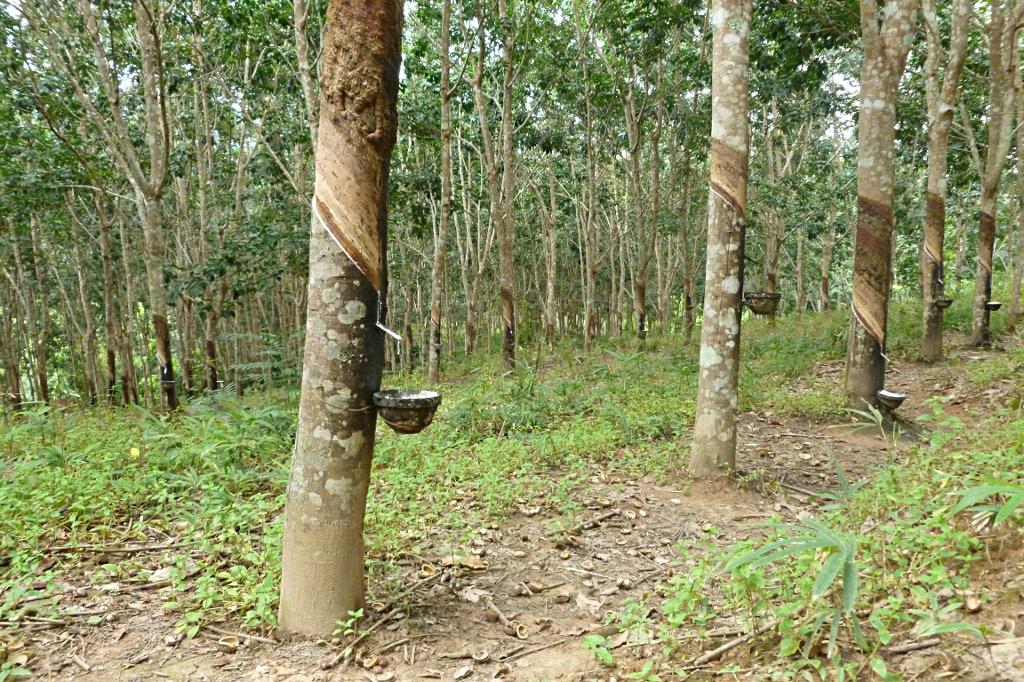After more than two weeks traveling around China, the time had finally come to leave the large country in the far south to make a major change. We had to adapt to a new spoken and written language, a different mentality, a different culture, in short, we had to adapt to South-East Asia. Laos is considered one of the poorest countries in South-East Asia and until a few years ago experienced very little tourism. However we noticed how this is changing…
We spent our first day in Luang Namtha, our first destination in Northern Laos near the Chinese border, chilling out and recovering from our 18.5 hour bus marathon across Yunnan. We used the day to establish a sense of orientation in the center of the provincal capital (or village?) before we headed out to the caoutchuc plantations just outside the town.
Our first impression was that we had landed in a really sleeping place. Besides a few motorcycles there was almost no moving vehicle on the roads. The shop keepers patiently took care of the little business they had and the tourists spread out on various tours and into the surrounding villages. A very stark contrast to the busy places all around China, which never seem to sleep. For us perfect to slow down and take a rest.
In the afternoon we climbed the small hill in the north of the town on top of which a wat (temple) seems to have been under construction for an extended period of time. Further up the hill we found the golden stupa which serves as a symbol of advertisement for Luang Namtha. Travel agencies even offer bicycle tours up to the place. We took a close look at both of the places before we headed back to our guesthouse. We spent some time resting and writing on the blog post for Yunnan.
Unfortunately we had to be back on the road before 4pm, since the tourist information office closes at that time. We wanted to learn more about the possibilities for trekking and kayaking in the area. However the service turned out to be rather limited. While the office made a very good and well arrange impression, the person in the office only handed us some forms to fill in for statistical purposes and a catalogues of travel agency in Luang Namtha. When we asked him about booking, he sent us on the way to directly talk to the travel agents. There is not really a need for this type of tourist information…
Back on the main road we quickly found a travel agency which offered a one day trek into the national park which we booked right away. Since two Polish had booked the same trek, we even got a little bit cheaper prices. Happy to have organized the following day we trotted off into a one of the better restaurants in town to have an outstanding Lao dinner consisting of fish sweet and sour for Lenka and a chicken laap for myself. Together with the fresh juice and a cool Beerlao while the rain started pouring this made an amazing closure for a relaxing day.
Already at 8:30am the next morning we were expected to meet at the travel agency for our trek. After our second noodle soup in Laos we arrived only a couple minutes late and had to learn that the Polish couple had cancelled the trip due to the heavy rain during the night. Therefore just the two of us followed the guide to the morning market to purchase food and drinks for the day. It was quite an interesting experience to observe a local close up on how they try food and negotiate on the market. Particularly interesting were all the dishes we come pre-portioned for two people from the various vendors. Finally we had enough ingredients for a delicious lunch consisting of fish, beans, noodles and sticky rice.
Already quite late we finally boarded the tuk-tuk we brought us to the small Khmu village of Nam Ha at the border of the Namtha national park. This is were we hit the first issue of the day: the canoe and boatmen were nowhere to be found. Our guide spent a considerable amount of time to find replacement and we were finally able to set across the river in a small and very shaky canoe. The water line with the 5 people on board was just a few centimeters below the edge of the boat. Unfortunately the search for the canoe used up all the time which was supposed to be spent on learning more about the little village of the local Khmu tribe.
The trek started with a steep ascent on a narrow and slippery path through primary jungle. The soft ground would pose a real challenges throughout the day such that we ended up all plastered in mud by the time we got out of the jungle. We enjoyed nature and the fresh air during those times we didn’t have to direct all of our attention to where we were stepping. The guide even found a little bit of time to explain a couple of plants and show as a sophisticated trap system developed by the locals.
In a prepared camp consisting of a covered table and two benches we got to eat all the delicacies we had purchased in the morning. We were more than an hour behind schedule which put the guide under quite some pressure. The pressure should only increase because surprisingly the last river crossing was flooded hip deep. Quite a surprise during the wet season in Laos. Eventually he did find a possibility to walk around and we could cross the little river a little bit upstream. We asked the guide later whether the water only was so high because of the rain of the previous night, but he mentioned that the water was always that high during rainy season. All in all he did not seem really prepared for quite a few standard situations, which we could only blame on the fact the tourism is rapidly expanding in Laos and not all travel agencies and tour guides are up to halfway decent standards.
We once again closed the day with a delicious meal and started packing our gear as we were due to have another long day on the bus the following day. We had bought tickets from Luang Namtha to the town of Pakmong, about 6 hours east of Luang Namtha, followed by a minibus ride of another hour to reach the small village of Nong Khiaw on the Nam Ou river. Similar to our bus ride in Yunnan we headed a direction perpendicular to all the rivers such that we had to cross several passes and valleys. The atmosphere in the little villages was quite different from Yunnan and the landslides much more numerous.
The minibus driver is friends with on of the guesthouse owners in Nong Khiaw and of course dropped us off right in front of his guesthouse. We took a look as previously agreed over phone but found the offer not to be compelling enough to sign up. This turned out unfortunate for the driver as he had hoped for a hefty commission which he now didn’t get. We finally found an excellent room across the river for a really good price at a more central location, the only thing missing was the river view.
We set out to explore the little village only to meet a fellow from New Zealand who operates a hostel and travel agency. He is one of the few offering the 100 waterfalls trek which apparently is world famous. The tour leads from a small village about one hour downstream by boat from Nong Khiaw through rice, hop and corn fields to an impressive system of waterfalls, in which the water cascades over 100 steps (depending on how one counts) down the mountain. It was an amazing experience to walk up the rocks with the rough surfaces such that one didn’t have to worry about slipping. The fun experience once again was surrounded by amazing nature which can only be found in sub-tropical regions. While we returned much wetter than two days prior in Luang Namtha we weren’t nearly as dirty, we really enjoyed the tour. The guides were very attentive and competent and had quite a bit fun during the hike as well. We rounded off another perfect day with a delicious meal at an Indian restaurant in Nong Khiaw.
After another physical day we took a more peaceful approach to Sunday. We had planned a two day trip to Muang Ngoi, a small settlement about one hour upstream from Nong Khiaw. The place is much more laid back and silent due to the fact that there are no roads into the village and electricity has only been there for a year and a half. Since the boat only left at 11am we passed by the bus station to inquire about transport to Luang Prabang, our next destination.
A soft rain started and we eventually boarded the boat from which we enjoyed amazing karst scenery along the Nam Ou river, which looked like covered by a green carpet. At the pier of Muang Ngoi we were approach by Gabriel, a Swede who married in the village and had some bungalows on the river side to rent. He invited us to check out his place staffed with plenty of articles form Ikea in Sweden. Since the rooms were nice and clean and offered a couple of hammocks with a view on the river we didn’t hesitate one second when he suggested that the room would be ours for 5 euros a night.
In the afternoon we started exploring the small settlement and its surroundings. Once again, as during our 100 waterfall hike, we had more encounters with leeches than we had asked for. Meanwhile we have become experts in removing these parasites. Once all of them were removed, we relaxed a little more on the river front slurping up a delicious mango milk shake. It so happened that the evening showers hit Muang Ngoi at exactly that time such that we decided to stay for dinner too. Finally we retired to our room and the hammocks…
For Monday we only had 2 things on our list: First we had to catch the boat back to Nong Khiaw and second we wanted to visit the Pathok Caves a little bit outside the village. Gabriel had an amazing breakfast buffet on offer which we could not resist. Strategically very smart he placed the delicious food right at the road side. With full stomachs we headed down to the pier where the boatmen were eating their breakfast. Little later we were on the Nam Ou river heading swiftly back to Nong Khiaw in a long-boat. Since the weather had turned nice and we even saw the sun for a few minutes, we got to see the amazing landscape in quite a different light.
Once in Nong Khiaw we dropped our luggage off at the guesthouse, rested for a short while before we grabbed a Papaya salad for lunch.
The last visit in the area was at the Pathok Caves where the local population found refuge during the second Indochina War. While one uses a comfortable concrete staircase to enter the caves at about 15m above ground, there probably once were bamboo ladders…
After one more cleaning activity, we headed out to chase some more food. Right behind our guesthouse we found a nice terrace on the second floor. We enjoyed the last few rays of sunshine and feasted on sweet and sour fish and Okram chicken.

